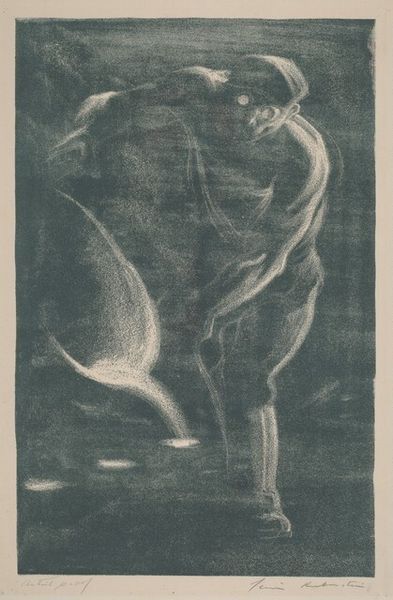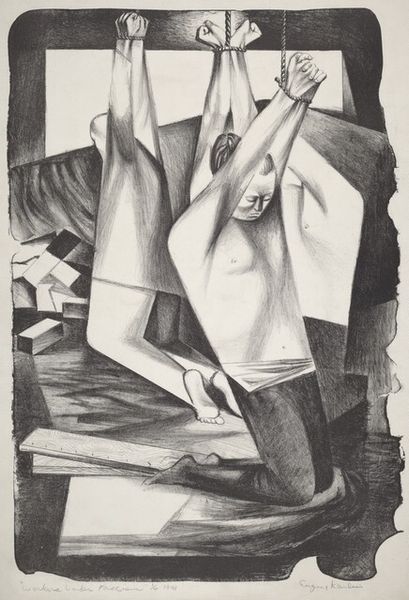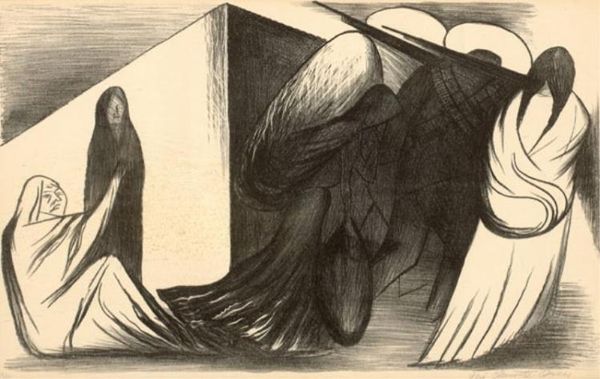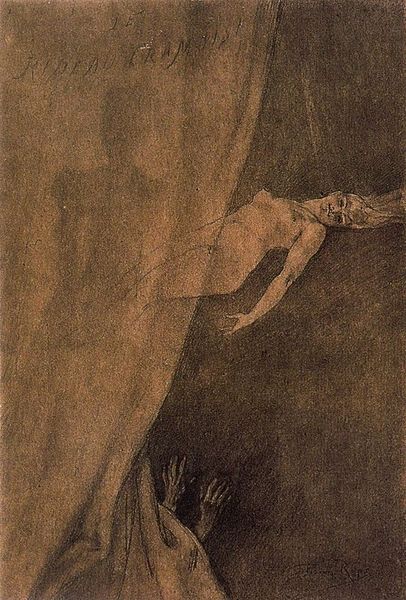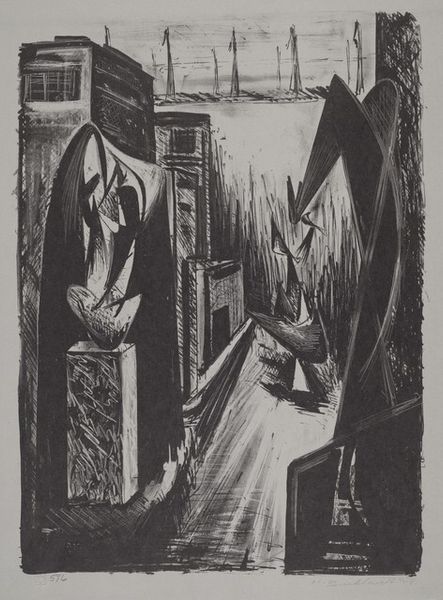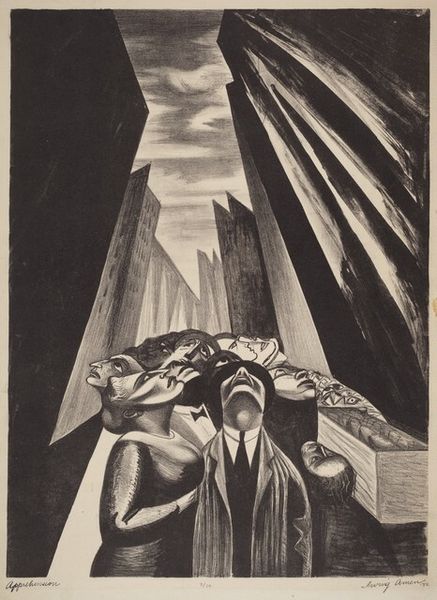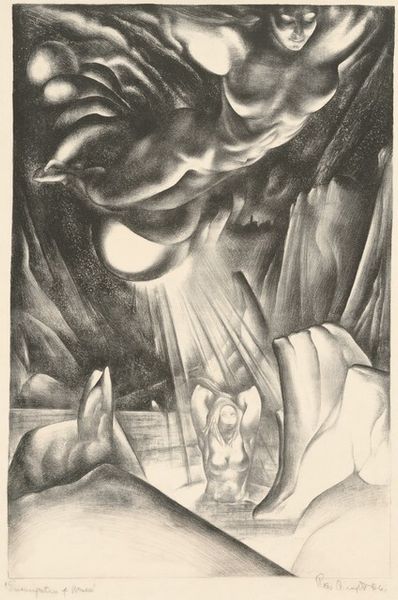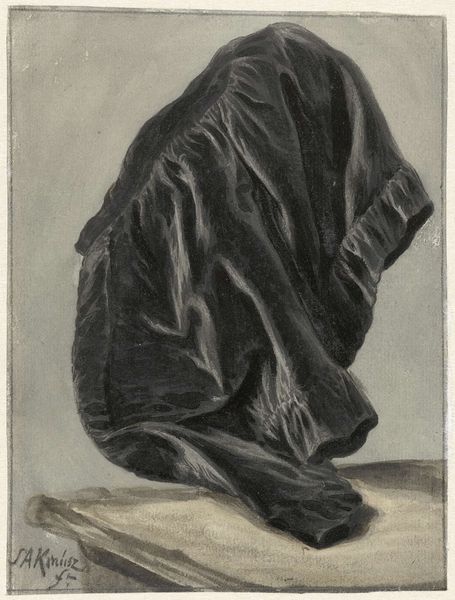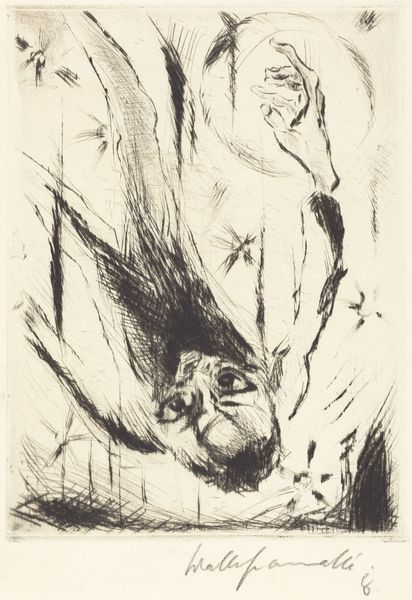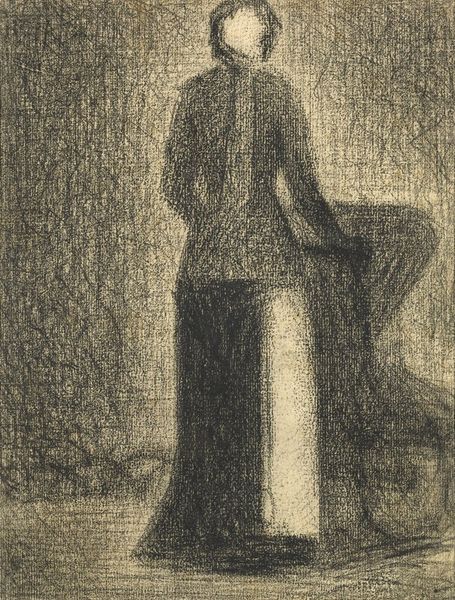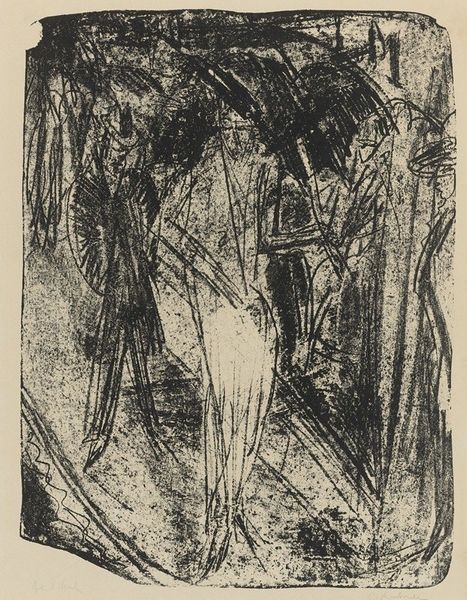
drawing, graphite
#
pencil drawn
#
drawing
#
cubism
#
charcoal drawing
#
figuration
#
pencil drawing
#
abstraction
#
line
#
graphite
#
modernism
Copyright: Public domain Japan
Editor: Here we have Yasuo Kuniyoshi’s "Carnival," a graphite drawing from 1949. It has a slightly unsettling feel to it, with draped fabrics and dismembered limbs. What do you see in this piece? Curator: This drawing pulls at the threads of cultural memory, doesn't it? Think about what carnivals often represent: a temporary suspension of rules, a dance with the grotesque. Here, though, that playfulness seems strained. Do you notice how the artist renders the limbs—almost as objects? Editor: Yes, they seem very detached from any body, suspended in space. It disrupts the celebratory expectation you'd usually associate with the carnival theme. Curator: Exactly. It's unsettling because Kuniyoshi seems to be hinting at something darker, a loss perhaps. Consider that 1949 was just after World War II. How might the imagery of fragmented bodies connect to collective trauma and the psychological fragmentation experienced by many during that time? Editor: I never would have made that connection, but that's fascinating. So the disembodied limbs aren't just stylistic; they carry symbolic weight. It transforms the whole piece into a potent commentary. Curator: Precisely. The artist is evoking the carnivalesque, yes, but using its symbolism to confront a deeper, more painful reality. Editor: That changes everything. It's no longer just a scene, but a visual representation of something much larger. Thanks for sharing this perspective. Curator: It’s in recognizing the symbols and their transformation over time that we start to understand the powerful layers within the image.
Comments
No comments
Be the first to comment and join the conversation on the ultimate creative platform.
